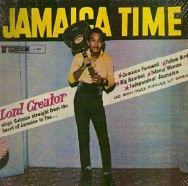 In a prior article I addressed the particular corporate creature I had “discovered” called the “High Tone Manager.”
In a prior article I addressed the particular corporate creature I had “discovered” called the “High Tone Manager.”
On further reflection, I thought it would be useful if You, Dear Reader, happened to be a High Tone Manager and began to realize it after reading that particular blog. I imagined that you might have been stumped as to what to do about it, and without a clear course of action.
I thought I had found a solution when I found a book at Borders in Miami called “Authentic Leadership.” I quickly scanned through the book and was disappointed as it had none of what I wanted it to have. After “chewpsing” my teeth, I decided that I really needed to write about it, rather than just… “chewps.” (“Chewpsing one’s teeth” is the same as kissing one’s teeth.)
What was I looking for?
There was a particular young, hot-shot senior manager who I met and worked with for a while, who was an outgoing, friendly, gregarious high-flier. He had been promoted rapidly, and in his early thirties had about half of the company reporting to him.
He was a relentless self-promoter, who was deeply invested in looking good, and in his organization looking good, the better for him.
However, after a meeting with him I made this remark: “he needs to have his first big failure.”
Now, lest you accuse me of having “goat mout’,” my intention was not to cause him to fail or to wish him badly. On the contrary, I want him to succeed fabulously, but the kind of learning that he needed to do can only come from failure, and the humility and insight that comes from having to deal with public embarrassment.
This I know from personal experience.
A few years ago I was divorced from my wife of 15 years, and it came as a shock to everyone except our closest 5 or so friends.
Part of what kept me in the marriage for that long, and kept me trying to work things out, and would not allow me to consider the possibility of divorce (while keeping all this hidden from as many people as possible) was shame. I could not bear the public embarrassment about a failure that should not happen to us, or more accurately, to me.
In many ways I was a poster-boy for marriage, and led public personal development programs in Florida for a large company, and in the Caribbean within corporations in which my “testimonial” was largely about how the techniques I was sharing had made a big difference for me in my marriage, first and foremost. Hundreds (maybe thousands) of people had heard how I had worked to turn my marriage around, and many had thanked me for bringing some light into their situation.
A failure of the marriage would bring an end to the heroic story of a couple who had overcome adversity – to my mind.
Now, years later, and now re-married, I can see how much I learned from the experience and how much I’ve grown. It was humbling, and also freeing, to be able to end the pretending and to bring the truth into the open where it could be accepted as fact. In many cases I had to apologize for keeping friends and family in the dark for so long.
In a real sense, I was a “high-tone husband” with respect to my marriage.
Powerful leadership has many of the same traits.
- Telling the truth.
- Being authentic.
- Making things right.
- Causing reconciliation.
- Apologizing.
- Taking responsibility.
But these only make sense when there is a recognized failure that is completely embraced, and completely owned.
Without it, the manager or leader is left like I was – on a high wire act, waiting for the moment of failure to come to expose us in the way we most fear.
The high-tone manager (or politician) is always running hard – trying to pile up enough accomplishments to stay ahead of the public failure that MUST come. Because the failure is seen as catastrophic, he or she must work harder and harder to prevent it, even as it seems to be coming closer and closer. The smile gets wider, the mood gets more upbeat, the jokes get louder, the laughing gets more raucous.
But the hollow feeling only expands in depth.
Until, the truth gets told. Then, the suffering stops. The high wire disappears. The ground is found to be solid. Confidence returns, but instead of the weak confidence that comes from successive positive results, it is a deep confidence that comes when one has weathered failure with character and conviction.
So, my wish for that high-tone manager is something like “many happy failures” because they can be for him, an opportunity to expand who he is for himself and others immensely.







